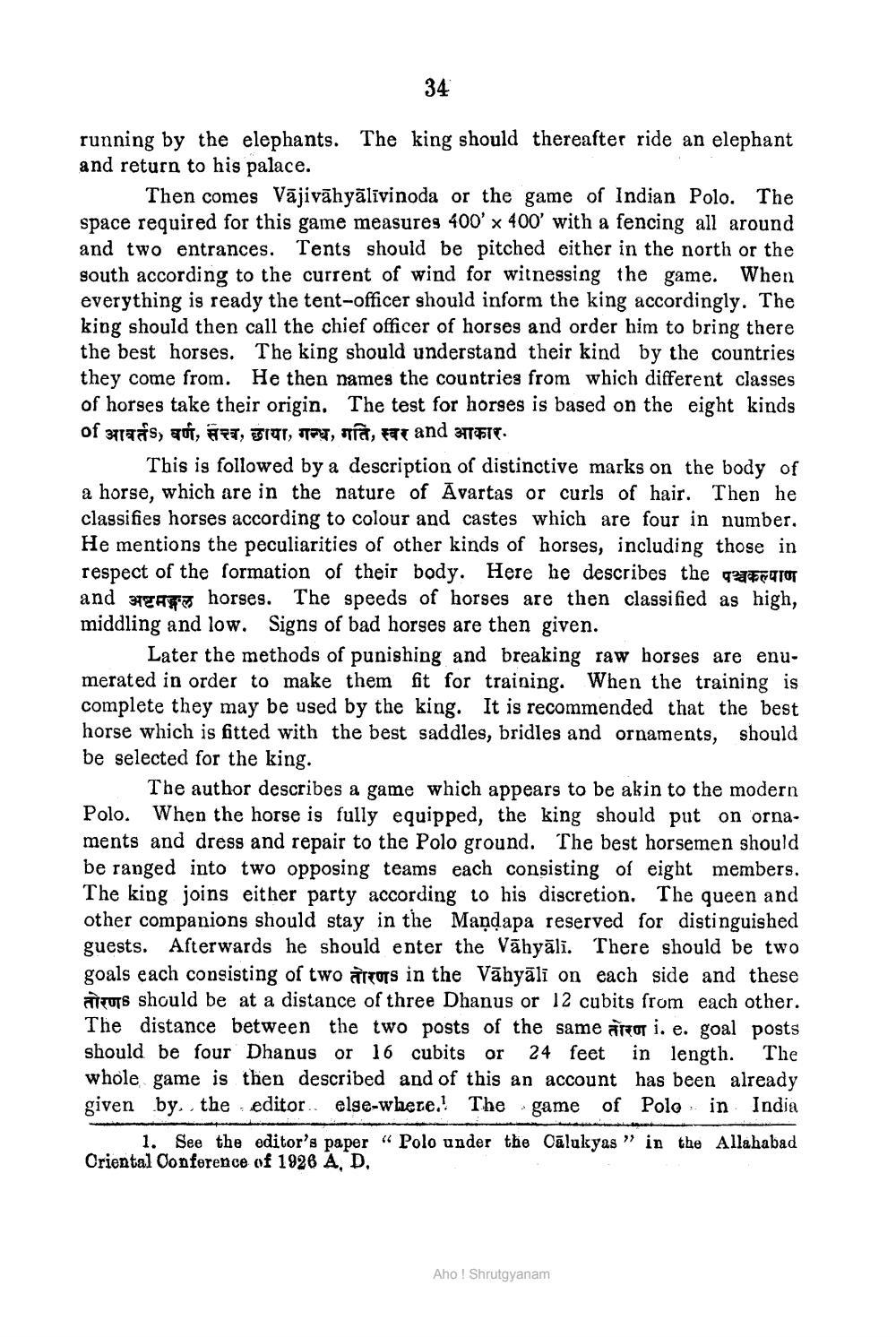________________
34
running by the elephants. The king should thereafter ride an elephant and return to his palace.
Then comes Vājivāhyālīvinoda or the game of Indian Polo. The space required for this game measures 400 x 400' with a fencing all around and two entrances. Tents should be pitched either in the north or the south according to the current of wind for witnessing the game. When everything is ready the tent-officer should inform the king accordingly. The king should then call the chief officer of horses and order him to bring there the best horses. The king should understand their kind by the countries they come from. He then names the countries from which different classes of horses take their origin. The test for horses is based on the eight kinds of praafs, ao, TT, TT, TT, tra, Fat and 317417.
This is followed by a description of distinctive marks on the body of a horse, which are in the nature of Avartas or curls of hair. Then he classifies horses according to colour and castes which are four in number. He mentions the peculiarities of other kinds of horses, including those in respect of the formation of their body. Here he describes the 997 OTOT and AS horses. The speeds of horses are then classified as high, middling and low. Signs of bad horses are then given.
Later the methods of punishing and breaking raw horses are enumerated in order to make them fit for training. When the training is complete they may be used by the king. It is recommended that the best horse which is fitted with the best saddles, bridles and ornaments, should be selected for the king.
The author describes a game which appears to be akin to the modern Polo. When the horse is fully equipped, the king should put on orna. ments and dress and repair to the Polo ground. The best horsemen should be ranged into two opposing teams each consisting of eight members. The king joins either party according to his discretion. The queen and other companions should stay in the Mandapa reserved for distinguished guests. Afterwards he should enter the Vāhyāli. There should be two goals each consisting of two autors in the Vāhyāli on each side and these
TuS should be at a distance of three Dhanus or 12 cubits from each other. The distance between the two posts of the same arto i. e. goal posts should be four Dhanus or 16 cubits or 24 feet in length. The whole game is then described and of this an account has been already given by the editor else-where! The game of Polo in India
1. See the editor's paper “ Polo under the Cālukyas " in the Allahabad Oriental Conference of 1926 A, D,
Aho ! Shrutgyanam




